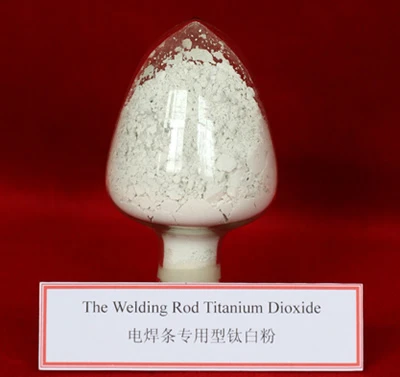
Dez . 16, 2024 22:40 Back to list
Anatase Titanium Dioxide Properties and Applications in Various Industries
The Versatility and Applications of Anatase Titanium Dioxide
Anatase titanium dioxide (TiO2) is a fascinating material that has garnered significant attention in a variety of fields, including photonics, catalysis, and environmental remediation. Known for its unique properties and versatility, anatase form of TiO2 is distinguished from its other polymorphs, such as rutile and brookite, primarily due to its superior photocatalytic capabilities and high surface area. This article explores the characteristics, production methods, and myriad applications of anatase titanium dioxide, underscoring its importance in modern technology.
Characteristics of Anatase Titanium Dioxide
Anatase TiO2 is characterized by its tetragonal crystal structure, which contributes to its unique optical and electronic properties. It exhibits a narrower band gap compared to rutile, typically around 3.2 eV, which allows it to absorb UV light effectively. As a result, anatase TiO2 is particularly efficient in driving photocatalytic reactions under ultraviolet illumination. This property makes it an attractive candidate for various applications in environmental remediation and energy production.
Furthermore, anatase titanium dioxide possesses excellent photocatalytic stability and resistance to photo-corrosion. These characteristics enable it to maintain its effectiveness over extended periods, making it a reliable material for long-term use in various applications.
Production Methods
The synthesis of anatase titanium dioxide can be achieved through several methods, each tailored to produce particles with specific characteristics such as size, shape, and surface area
. Common methods include sol-gel processes, hydrothermal synthesis, and chemical vapor deposition (CVD).1. Sol-Gel Process This method involves the transition of a system from a liquid 'sol' into a solid 'gel' phase. By controlling the pH and temperature during the process, researchers can produce fine anatase particles with high purity and controlled morphology.
2. Hydrothermal Synthesis This approach uses high-pressure and high-temperature aqueous solutions to convert titanium precursors into anatase. The hydrothermal method allows for the growth of well-crystallized anatase particles.
3. Chemical Vapor Deposition (CVD) CVD is a process that allows for the deposition of thin films of anatase TiO2 on various substrates. This technique is vital for applications in semiconductor technology and coating materials.
Each of these methods can be optimized to produce anatase TiO2 with desired properties for specific uses, illustrating the adaptability of this material.
anatase titanium dioxide

Applications
The applications of anatase titanium dioxide are extensive and diverse, primarily owing to its photocatalytic properties.
1. Environmental Remediation Anatase TiO2 is widely used in photocatalytic processes for the degradation of organic pollutants in wastewater. The material can break down harmful substances into benign products under UV light, making it an effective solution for water purification.
2. Self-Cleaning Surfaces The photocatalytic properties of anatase TiO2 have led to its incorporation in self-cleaning coatings. When exposed to sunlight, these coatings react with moisture in the air, resulting in the breakdown of dirt and organic matter. This technology is utilized in various applications, including building materials and glass.
3. Energy Production Anatase TiO2 is employed in solar cells, particularly in dye-sensitized solar cells (DSSCs). Its high surface area and photocatalytic efficiency enable better light absorption and conversion of sunlight into electricity, showcasing its role in renewable energy technology.
4. Antimicrobial Applications The photocatalytic activity of anatase TiO2 is also exploited in antimicrobial coatings. When exposed to UV light, it generates reactive oxygen species that can kill bacteria and viruses, making it useful in medical applications and food packaging.
5. Cosmetics and Sunscreens Due to its UV-blocking properties, anatase TiO2 is included in various sunscreen formulations, providing protection against harmful UV radiation without causing skin irritation.
Conclusion
Anatase titanium dioxide is a multifunctional material that plays a crucial role across numerous industries, from environmental solutions to renewable energy and beyond. Its unique characteristics, especially its photocatalytic properties, make it invaluable for addressing some of the modern world’s pressing challenges. As research continues to innovate and improve its applications, anatase TiO2 is poised to become even more significant in the quest for sustainable technologies and solutions. The future of anatase titanium dioxide looks promising, and its integration into new applications will undoubtedly shape advancements in various fields.
In essence, anatase TiO2 exemplifies how materials science can contribute to sustainable development, showcasing the potential of nanomaterials in fostering positive change in our world.
-
High-Quality Titanium Dioxide R605 Powder Coating Multi-Purpose Product – Reliable China Supplier
NewsJul.04,2025
-
High Purity Chlorination Process Titanium Dioxide Manufacturer & Wholesale Supply from China
NewsJul.04,2025
-
China Lithopone in China Supplier – High Quality Lithopone ZnS 30% Powder for Wholesale
NewsJun.10,2025
-
Top China Titanium Dioxide Company – Premium TiO2 Powder Supplier & Manufacturer
NewsJun.10,2025
-
Fast Shipping 99% Pure TiO2 Powder CAS 13463-67-7 Bulk Wholesale
NewsJun.10,2025
-
Top China Titanium Dioxide Manufacturers High-Purity R996 & Anatase
NewsJun.10,2025
